I guess it was bound to happen, too many film cameras loaded at the same time and lots happening. Having three Olympus OM10s plus a similar looking OM1 can be confusing, As a result, I recently realised one of my OM10s still had some Fuji Neopan pro 1600 in it. A good friend had treated me to some and I couldn’t remember when it was loaded. The expiry date was 2012 and what I do remember is that is wasn’t expired stock when it went into the camera.
So why had I left it so long? I guess at the time I had about 10 film cameras which grew fairly quickly to over 40, including 20 that were gifted to me. I had also saved some from the tip and purchased a few such as the Bronica SQAi set and a Yashica mat 124g which all seemed more exciting to shoot. As such, I forgot about it until I recently sorted my cameras out – I even sold a few – and in the process found the OM10 with this old roll of Neopan still loaded.
The OM10 was launched in the summer of 1979 as part of the OM series, which, unless you attach the manual adapter, is an aperture priority camera. It’s incredibly small, but other than that I won’t bore you with the specifications as this is quite a common camera and has been written about on this site before here. It was the Fuji Neopan pro 1600 film that was of real interest to me when I found it. I was intrigued on two levels by how it would turn out: what had I shot over the years, and how bad would the grain be? I had taken about 20+ images over the first couple of years after loading but then I hadn’t shot any for a few years before deciding to finish it off in the darker months of 2019.
I processed the film at home using Tetenal Paranol S. I couldn’t find a dev time at the usual websites for the film, but as it’s supposed be very similar to Rodinal so I used the guide time of 5 minutes at 20 degrees c. It was then scanned on an Epson v500 at 1200 dpi. Be aware Epson v500 Mac users, this scanner is not now supported on the latest version of OSX (Catalina), so my iMac is one release behind my laptop. So it’s either buy a third party scanning software, upgrade the v500 or use the very basic Image Capture application included with OS X.
As for the results, well as you can see the grain is not too bad in good lighting and quite severe in poor lighting, which I guess is to be expected. This first image is at Sutton Coldfield station taken at the end of 2019.
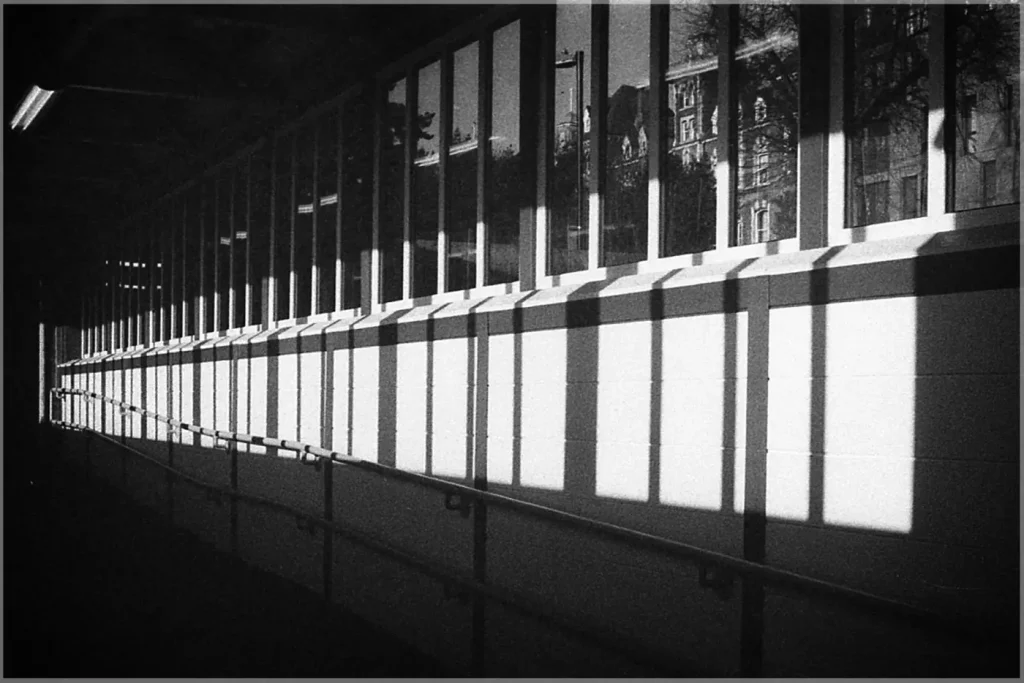
Pharmacy sign shadow in Sutton Coldfield, again in 2019
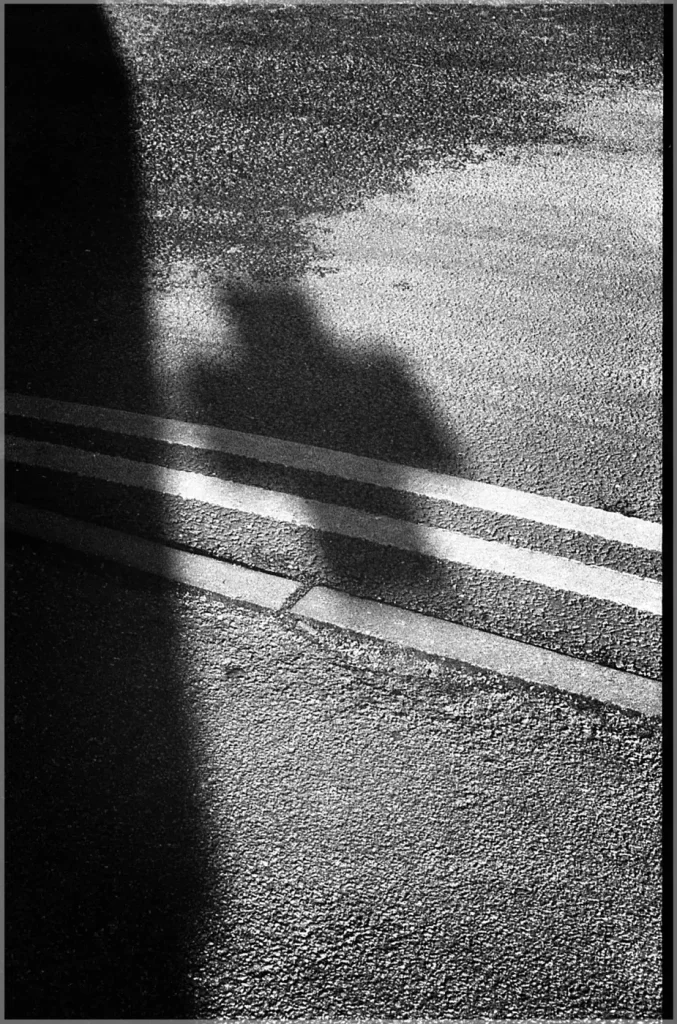
Another Fluorescent more recent image of the shadow cast by a light
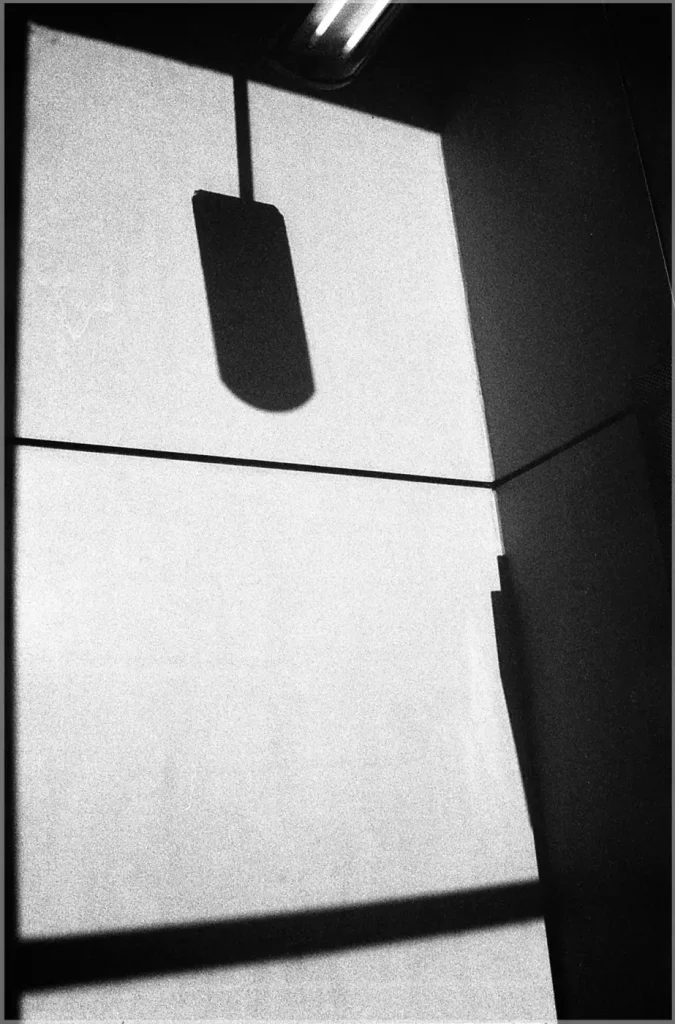
These next two images were taken around 2015 I think
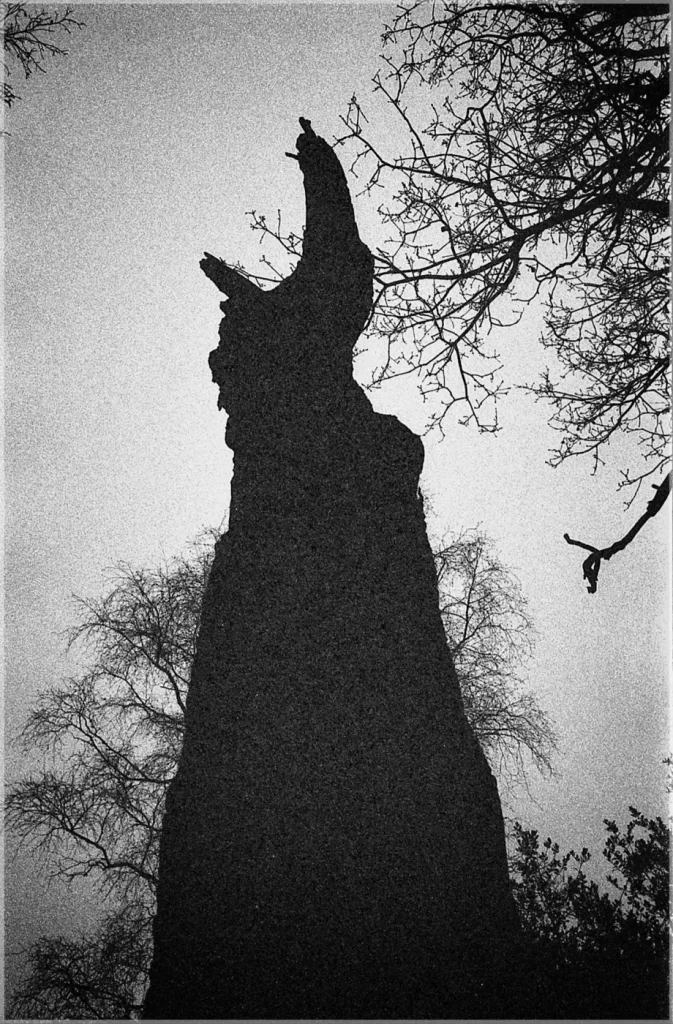
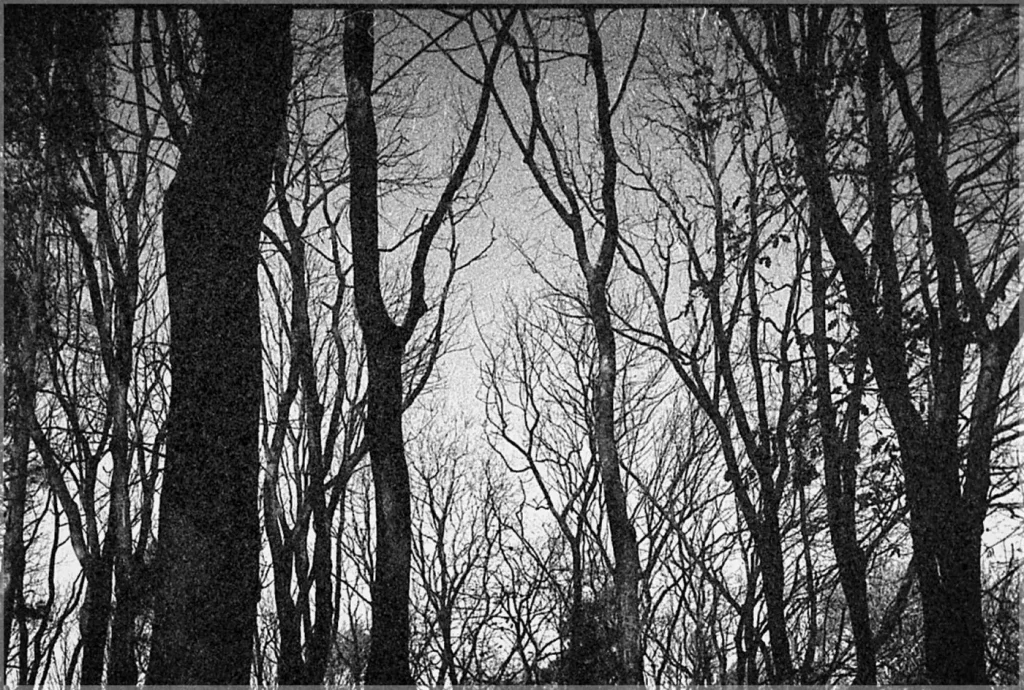
This next image was the first on the roll and I immediately remembered taking it. It was shot in low light, in a pub opposite the Hippodrome in Birmingham on a street photography walk during a Chinese New Year in 2012. It was quite poignant, there were four of us on the walk as the youngest member of the usual group had unfortunately just passed away a couple of days earlier. I had not seen him for a few years and Brian in the photograph had known him since he was six weeks old.
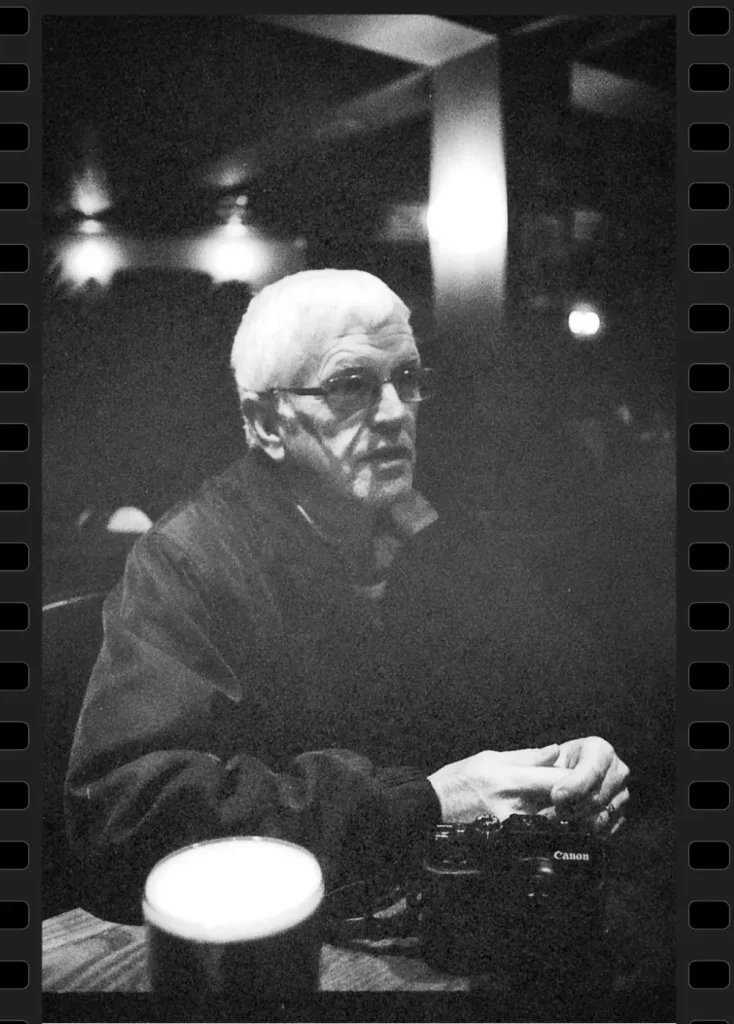
This really brought back floods of memories of the shoots we all had been on, it’s amazing to refelct on the power of a personal photo and all the associated memories.
I have a couple of more rolls of the Fujifilm to shoot and but will give a non-Olympus camera a shot next time so hopefully in won’t take 8 years to get throguh the roll. One of my 2020 resolutions is also to finish off the film in my OM1 and Leica iii… and not load too many other cameras at a time. Let’s see how long that lasts…
Thanks
Share this post:
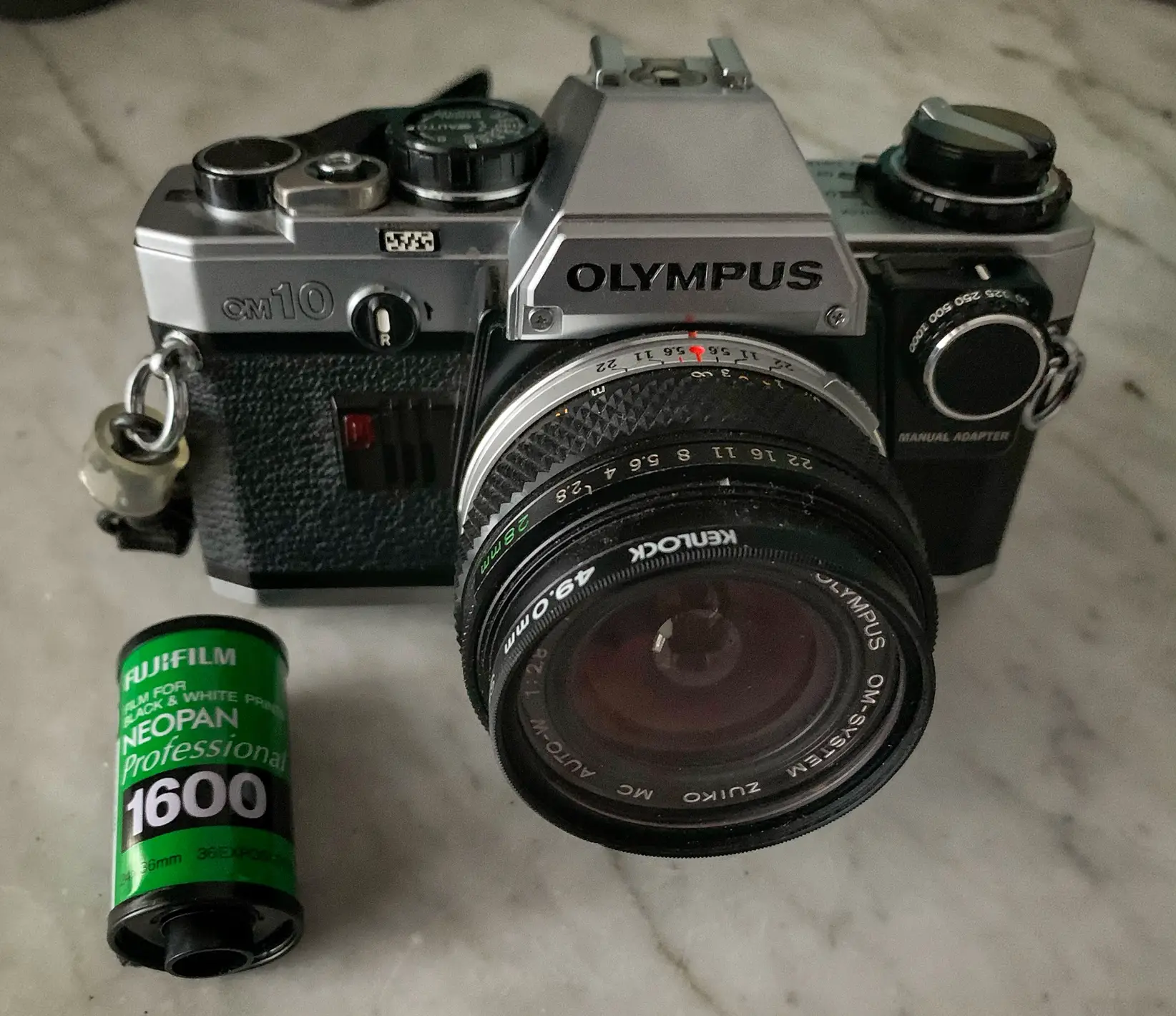








Comments
Marco Andrés on Thanks for the memories – Finishing a Roll of Neopan 1600 I started in 2012 – by Dave Donnelly
Comment posted: 09/02/2020
Image capture features
● Scans: color/Monochrome negatives/transparencies
● Resolution: custom dpi use 1800]
● Image sizes: Medium format, 35mm, custom, which I use]
● Output: TIFF/PNG
● Features: Unsharp mask/backlight correction/dust removal
GIMP [https://www.gimp.org/downloads/]] features
● 8/16/32 bit integer 16/32 bit float
● Color/monochrome
And more [documentation: https://www.gimp.org/docs/]
Comment posted: 09/02/2020